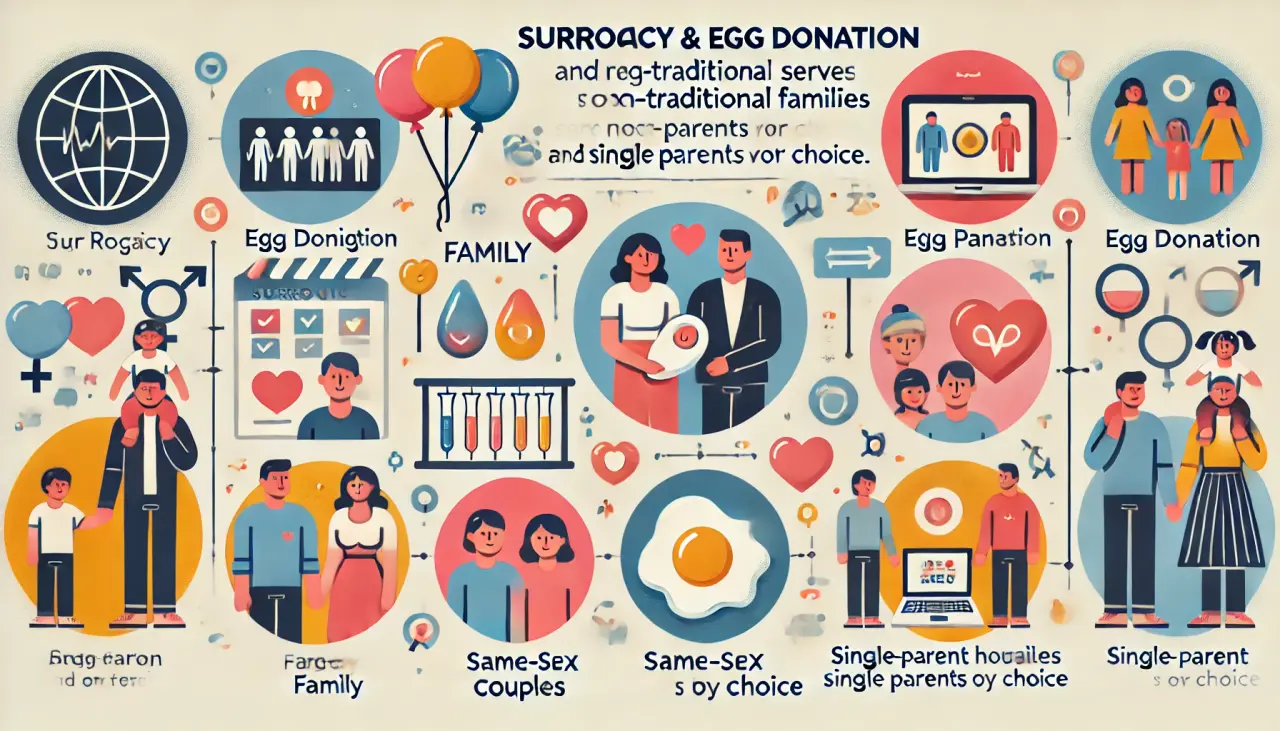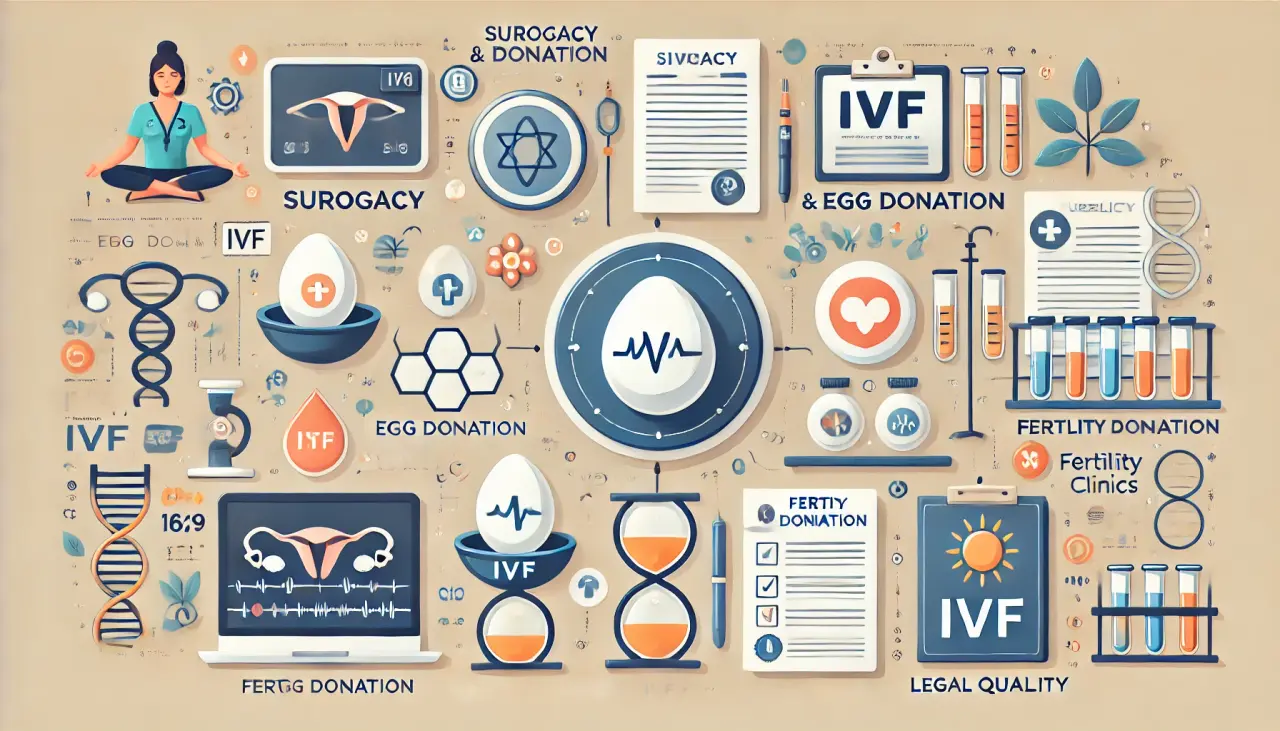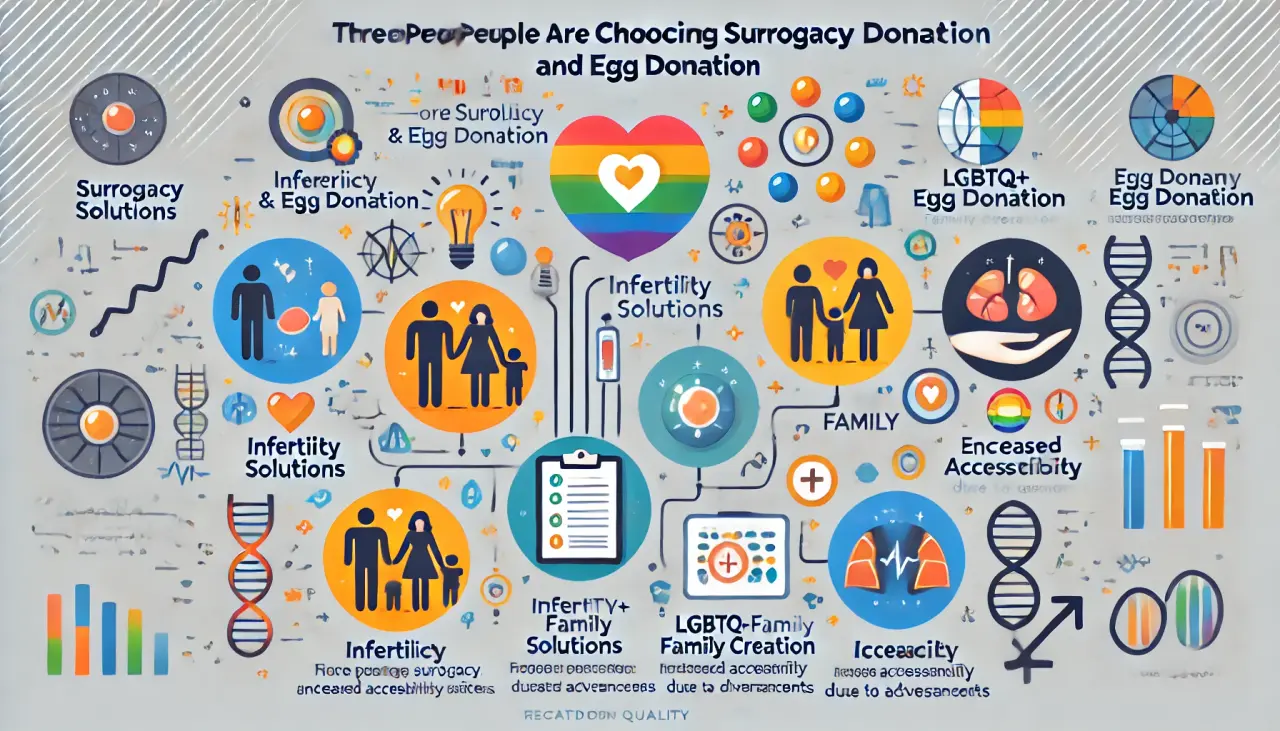
Why Are More People Choosing Surrogacy and Egg Donation? The Rise in Surrogacy and Fertility Solutions
In recent years, surrogacy and egg donation have seen significant growth in the U.S., driven by a variety of factors. As third-party reproduction methods become more widely accepted and accessible, more individuals and couples are turning to these options to build their families. This article explores the reasons behind the rise in surrogacy and egg donation, and why more people are choosing these pathways for parenthood.
1. The Need for Surrogacy and Egg Donation in Addressing Infertility
A major driver behind the rise in surrogacy is the increasing number of individuals and couples facing infertility. Infertility affects millions of people worldwide, and for many, egg donation and surrogacy offer a viable solution.
- Egg Donation: For women who are unable to produce viable eggs due to age, medical conditions, or genetic issues, egg donation offers a way to still have biological children. Donated eggs can be fertilized with the partner’s sperm (or a sperm donor) to create embryos, which are then implanted in the recipient mother.
- Surrogacy: Surrogacy is a solution for couples where the woman is either unable or unwilling to carry a pregnancy. Gestational carriers (surrogates) carry the baby for the intended parents, often using embryos created via egg donation or IVF with the parents’ own genetic material.
As people are delaying starting families for career or personal reasons, the biological clock continues to pose challenges. While medical advancements have made it easier to combat infertility, the underlying biology remains the same. As a result, more people are turning to egg donation and surrogacy as options to fulfill their dream of having children.

2. Changing Cultural Norms and the Rise of Non-Traditional Families
Another factor contributing to the rise in surrogacy is the shift in societal norms around family-building. Many individuals and couples are exploring alternative routes to parenthood, including surrogacy and egg donation. For instance:
- LGBTQ+ Families: For LGBTQ+ individuals and couples, surrogacy and egg donation are essential means of starting a family. Many LGBTQ+ couples who wish to have biological children need to rely on a surrogate and/or egg donor to make their dream of parenthood a reality.
- Single Parents by Choice: Some single men and women are choosing to become parents through egg donation and surrogacy. These individuals may not want to wait to find a partner or may face challenges in finding one who is ready for parenthood.
Research from the Family Equality Council shows that 63% of LGBTQ Millennials (aged 18-35) are considering expanding their families, and 48% are already actively planning to grow their families. This data highlights the growing trend of non-traditional family structures and the increased demand for third-party reproduction, including egg donation and surrogacy.

3. Medical and Technological Advancements Making Surrogacy More Accessible
Advancements in reproductive technology have played a significant role in making surrogacy and egg donation more accessible. The development of in vitro fertilization (IVF) and improvements in fertility preservation techniques have allowed more people to consider these options.
- Fertility Clinics: The expansion of fertility clinics across the U.S. has made it easier for individuals to access egg donation and surrogacy services. These clinics offer comprehensive services, from egg retrieval to embryo creation, to the matching of intended parents with a surrogate.
- Legal and Regulatory Landscape: Over the years, many states have enacted legal frameworks that protect the rights of intended parents, surrogates, and egg donors, making the process more secure and transparent.
These innovations have lowered the barriers for those interested in third-party reproduction, making it a more viable option for a wider group of people.

4. The Economic Factors Behind the Growth in Surrogacy and Egg Donation
The rise in surrogacy can also be attributed to economic factors. The demand for fertility treatments, including egg donation, has increased as more people are financially stable enough to consider these options.
- Economic Stability: Many individuals and couples who once might have been limited by the costs associated with egg donation and surrogacy are now able to afford these services, thanks to a more prosperous economy and the availability of financing options from fertility clinics.
- Availability of Egg Donors: The availability of egg donors has also increased, partly due to greater awareness of the egg donation process. Young women who may not be ready to start families themselves are increasingly willing to donate their eggs in exchange for compensation, thus providing a larger pool of donors for intended parents.
As the financial accessibility of these services grows, so does their popularity. This has made egg donation and surrogacy more attainable for people who might have previously been excluded from the process.

5. Why More People Are Choosing Surrogacy and Egg Donation
Given all of the factors mentioned above, it’s clear that there is a growing trend toward choosing surrogacy and egg donation. More people are choosing these reproductive options because they:
- Offer a path to parenthood for individuals and couples facing infertility or other medical challenges.
- Provide opportunities for LGBTQ+ individuals and couples to create families.
- Are increasingly accessible due to medical, legal, and financial advancements.
In short, the rise in surrogacy and egg donation is driven by a combination of biological, technological, and social factors that are making it easier for more people to start families through these alternative routes.